Innovation-driven Engineering
Engineered for the Future, Designed for Today
Pioneering AI/ML solutions, cloud engineering, and modern user experiences to transform how enterprises operate, innovate, and grow.
Our Engineering Core Principles
At Ramco, we're guided by these engineering principles that shape how we build and deliver products
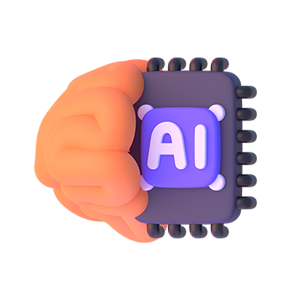
AI-Driven Intelligence
We harness the power of Artificial Intelligence and Machine Learning to automate processes, drive insights, and deliver predictive outcomes across the enterprise.
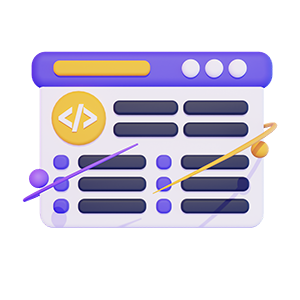
Composable Architecture
Our platforms follow a modular, API-first approach, enabling agile deployment, seamless integration, and scalable innovation—tailored to changing business needs.

DevSecOps Culture
Security is not a checkpoint—it’s continuous. Our DevSecOps model embeds security into every phase of the software lifecycle, enabling safe and rapid delivery.

Cloud-Native & Resilient
Built for the cloud, our systems are elastic, resilient, and self-healing—ensuring high availability, global scalability, and fast disaster recovery.
Featured Articles
From Pixels to Prompts: How a Decade of Design Taught Me That AI Can’t Replace Creativity, Curiosity and Empathy
Let’s be honest — AI is the word of the year. Everywhere you look, it’s the same buzz: “AI is going to take our jobs.
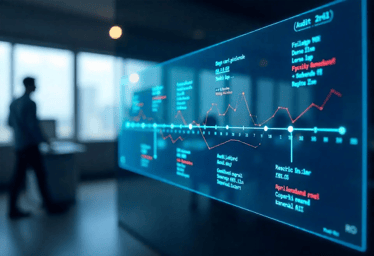
Scalable and Searchable Audit Trail with Elasticsearch: Ramco’s Modernized Approach
In an era where auditability, transparency, and compliance are critical, Ramco is modernizing its systems with a scalable and intelligent audit trail architecture.
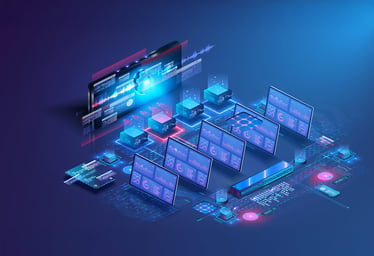
Modernizing Bulk Processing
Ramco Applications had the challenge of processing for high volume wherein the processing time was high and had the limitation of processing only one at a time as the entire logic and processing was happening in the database layer.
Security
DevSecOps at Ramco: Making Security Everyone’s Responsibility
Shanmugam S
Jul 15, 2025
3 min read

When customers purchase software products, their foremost concern is often security—how well the application has been built to protect sensitive data and withstand threats. Only after security is assured do they focus on the product’s functionality. A quick search for “examples of data breaches” reveals that even top companies have suffered significant losses, legal actions, and regulatory penalties due to security lapses.
Common Customer Security Concerns
Customers typically raise the following questions when evaluating software products:- Is the application free from known security vulnerabilities?
- Are the open-source libraries used in the application free from known security vulnerabilities?
- How does your CI/CD pipeline ensure secure code review and secure product release? How do you ensure that your application aligns to the ever-changing security requirements and new external threats?
- Do these libraries have acceptable licenses?
- Has any code in the application been plagiarized from the web?
- Does the application expose sensitive data without proper access controls, or print such data in logs?
- Are configuration files containing API keys and passwords encrypted with strong algorithms or stored securely in key vaults?
The DevSecOps Solution: Shifting Security Left
The answer to these concerns is to adopt a “shift left” security practice, known as DevSecOps. DevSecOps integrates security into every stage of the DevOps process, embedding security assessments throughout the CI/CD pipeline. This approach makes security a shared responsibility among all team members involved in building and deploying software, ensuring it is considered from design through to deployment.Security in Practice at Ramco
At Ramco, we leverage a range of tools in our CI/CD pipelines to identify and address security issues early in the development lifecycle. The following diagram shows the tools in use in the different stages of DevSecOps.
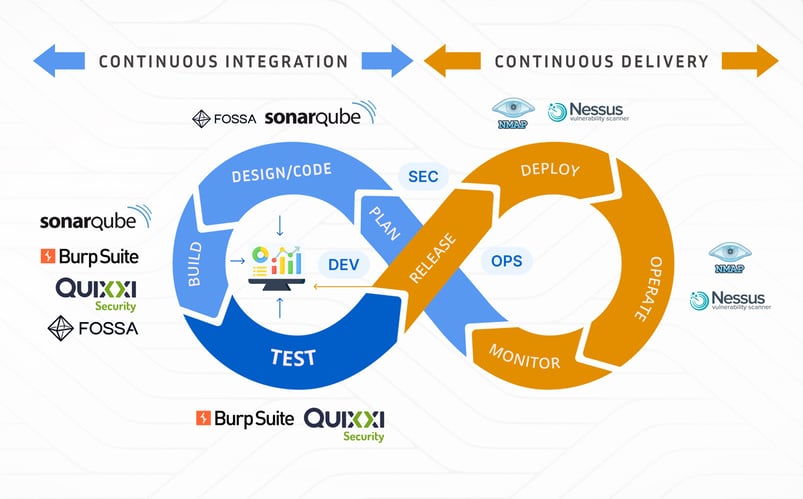
FOSSA
FOSSA is a leading tool for open-source license and vulnerability management integrated into CI/CD pipelines. During a FOSSA audit, the software scans all dependencies and third-party packages to generate a detailed Software Bill of Materials (SBOM). This SBOM offers a comprehensive view of open-source usage within a project and identifies vulnerabilities, providing recommendations for version upgrades to mitigate risks. The SBOM is maintained on a per-project basis, and FOSSA continuously monitors for new vulnerabilities—even if no code changes are made—alerting teams to emerging risks.In terms of licensing, FOSSA extracts and analyzes copyright information from code files and applies policies to ensure license compliance.
SonarQube
SonarQube is a popular code quality and security analysis tool integrated into CI/CD pipelines. It automatically scans source code for bugs, vulnerabilities, and code smells every time code is pushed to the repository. By enforcing quality gates, SonarQube ensures that only code meeting security and quality standards can be merged. This helps developers identify and fix issues early, leading to more secure, reliable, and maintainable software.Burp Suite
Burp Suite is a leading web application security testing tool used by security professionals and developers. It helps identify vulnerabilities such as SQL injection, cross-site scripting (XSS), and other security flaws in web applications. Burp Suite provides features for automated scanning, manual testing, and traffic interception, making it a comprehensive solution for assessing and improving web application security.Quixxi Security
Quixxi Security is a comprehensive tool for mobile app security. It helps protect mobile applications by scanning for vulnerabilities, detecting risks such as insecure code, data leaks, and unauthorized access. Quixxi also offers features like app shielding, code obfuscation, and real-time threat monitoring, enabling organizations to safeguard their mobile apps against evolving security threats.Nessus
Nessus is a widely used vulnerability assessment tool that helps identify and fix security weaknesses in IT systems. It scans servers, networks, and applications for known vulnerabilities, misconfigurations, and missing patches. Nessus provides detailed reports and remediation guidance, enabling organizations to proactively address security risks and maintain compliance with industry standards.Nmap
Nmap (Network Mapper) is a powerful open-source tool used for network discovery and security auditing. It scans networks to identify active devices, open ports, running services, and potential vulnerabilities. Nmap is widely used by system administrators and security professionals to map network topologies and assess network security.Security Clearance
At Ramco, every new subsystem undergoes a thorough security clearance process both during the design stage and again before release. Security experts review the subsystem by evaluating detailed questionnaires that cover potential risks and best practices. Any recommendations or required changes identified during this review are addressed and implemented. Only after receiving final security clearance is the subsystem approved for deployment into any environment, ensuring robust protection from the outset.Summary:
By making security everyone’s responsibility and integrating it into every phase of development, Ramco ensures that our software is robust, compliant, and trustworthy—giving customers the confidence they need in our products.
Shanmugam S
Director – Engineering
Specializing in enterprise software solutions. He brings extensive experience in architecting and delivering complex technology implementations across industries.
Share this article
Shape the Future with Ramco
We're looking for passionate individuals to join our growing team. Explore opportunities that allow you to make an impact and grow your career in a supportive environment.
View All Open Positions



